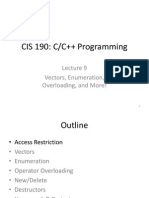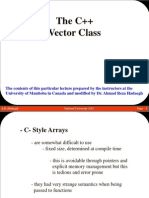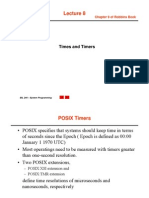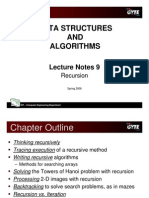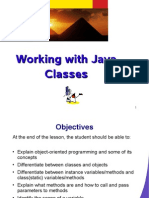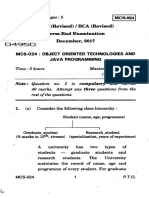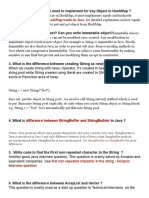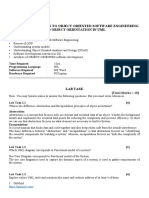0% found this document useful (0 votes)
95 views39 pagesData Structures AND Algorithms: Lecture Notes 5
The document contains lecture notes about sequential containers and the vector abstract data type (ADT). It defines the vector ADT as an ordered sequence of elements that can be accessed by index and provides common operations like insert, erase, push_back, and pop_back. It discusses how template container classes like vector can store elements of any type. The notes provide examples of declaring and using vectors to store strings and integers, and show how vectors support dynamic size and fast access by index. It outlines an implementation of a vector class with methods like push_back, reserve, and insert to add and manage the underlying array.
Uploaded by
elemaniaqCopyright
© Attribution Non-Commercial (BY-NC)
We take content rights seriously. If you suspect this is your content, claim it here.
Available Formats
Download as PDF, TXT or read online on Scribd
0% found this document useful (0 votes)
95 views39 pagesData Structures AND Algorithms: Lecture Notes 5
The document contains lecture notes about sequential containers and the vector abstract data type (ADT). It defines the vector ADT as an ordered sequence of elements that can be accessed by index and provides common operations like insert, erase, push_back, and pop_back. It discusses how template container classes like vector can store elements of any type. The notes provide examples of declaring and using vectors to store strings and integers, and show how vectors support dynamic size and fast access by index. It outlines an implementation of a vector class with methods like push_back, reserve, and insert to add and manage the underlying array.
Uploaded by
elemaniaqCopyright
© Attribution Non-Commercial (BY-NC)
We take content rights seriously. If you suspect this is your content, claim it here.
Available Formats
Download as PDF, TXT or read online on Scribd
/ 39
















